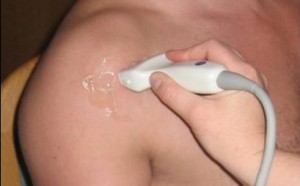According to the Bureau of Labor Statistics, tendonitis causes more than 70,000 people to miss work per year. This is just one of many reasons why it is important to understand the symptoms of tendonitis so that you can avoid not only the pain but the inconvenience it...
LATEST BLOGS
Husband and Wife of 54 Years Undergo Joint Replacement Surgeries On The Same Day
Premier Orthopaedics surgeon, Dr. Jonathan Garino, performed back-to-back procedures on a couple who have been married for 54 years! They shared their same-day surgery journey at the MUVE Center with @6ABC. Watch the incredible story below. Read the full ABC6 story...
What are Non-Surgical Treatment Options for a Herniated Disc
The spine consists of 26 bones called vertebrae and between them are cushion-like pads called “intervertebral discs”. The discs serve as shock absorbers for the vertebrae and help provide stability to the spine. When one of these intervertebral discs loses its normal...
New Technology in Sports Medicine

Within the past decade, several new technologies have emerged in the world of sports medicine. They have benefited physicians with diagnosing and treating patient injuries. New technology is always being researched in medicine so physicians and surgeons can utilize different techniques and methods to help patients heal quickly and more effectively from their sports-related injuries.
Below are some of the newest technologies in sports medicine that allow surgeons to treat patients more dramatically than with previous methods:
Musculoskeletal Ultrasound
This improved imaging technology provides real-time images of muscles, tendons, ligaments, joints, and soft tissue throughout the body. It helps surgeons repair problems such as tendon tears, rheumatoid arthritis, and bone and soft tissue infections. One of the greatest benefits of musculoskeletal ultrasound is that it allows surgeons to perform procedures on patients using a detailed view of each patient’s internal organs and tissues.
This technology also gives surgeons a closer look when evaluating a patient than other forms of imaging technology such as X-ray. Musculoskeletal ultrasound allows surgeons to identify infections, diseases, and other abnormalities they otherwise wouldn’t be able to see.
Percutaneous Tenotomy
Percutaneous tenotomy is an outpatient procedure where a surgeon identifies the painful area of the tendon with an ultrasound then inserts a needle into the skin and makes small incisions in the damaged tendon. This creates an enhanced healing response and leads to a faster tendon repair. The procedure typically lasts for about 20 minutes while the patient is under local anesthesia.
This technique is used to treat chronic tendon issues such as tennis elbow, golfer’s elbow, plantar fasciitis, gluteus tendonitis, hamstring tendonitis, and Achilles tendonitis. After the procedure, surgeons will discourage range of motion for about 48 hours. Patients are expected to attend physical therapy for 4 to 12 weeks.
Platelet-rich Plasma Therapy
Platelet-rich plasma therapy takes advantage of the natural healing properties of platelets in blood. Platelets are important in clotting blood and contain proteins called growth factors that are essential to healing injuries.
Platelet-rich plasma therapy is a technique that separates the platelets in the blood from the white and red blood cells and applies them directly to the injured area through injection or other methods. When the plasma is applied to the injury, it can help renew ligaments and tendons, promoting healing and preventing the need for surgery.
This procedure carries little risk because the patient’s own blood is being used as treatment. It’s typically used for chronic tendon injuries and acute ligament and muscle injuries. It’s also used in some surgical procedures to promote healing. It’s especially beneficial for athletes who deal with common sports injuries such as tennis elbow, Achilles’ tendonitis, and any ligament strain or sprain.
Technology is continuously advancing in the world we live in today. Sports medicine specialists, physicians and surgeons utilize this ever-present technology to benefit their patients by identifying their injuries more accurately and healing them faster and more effectively.



